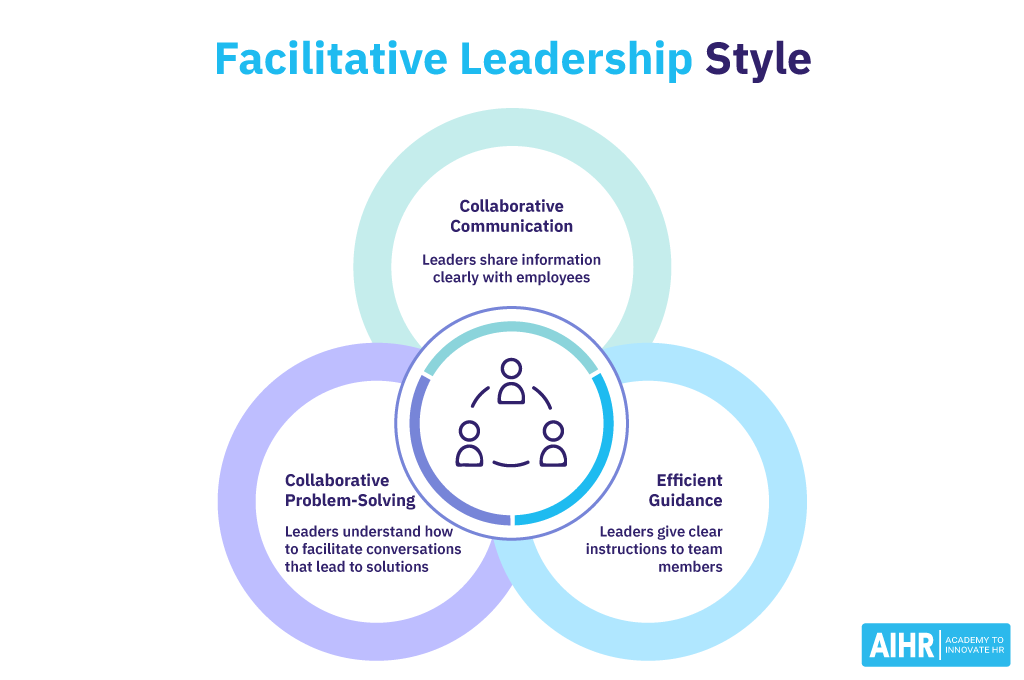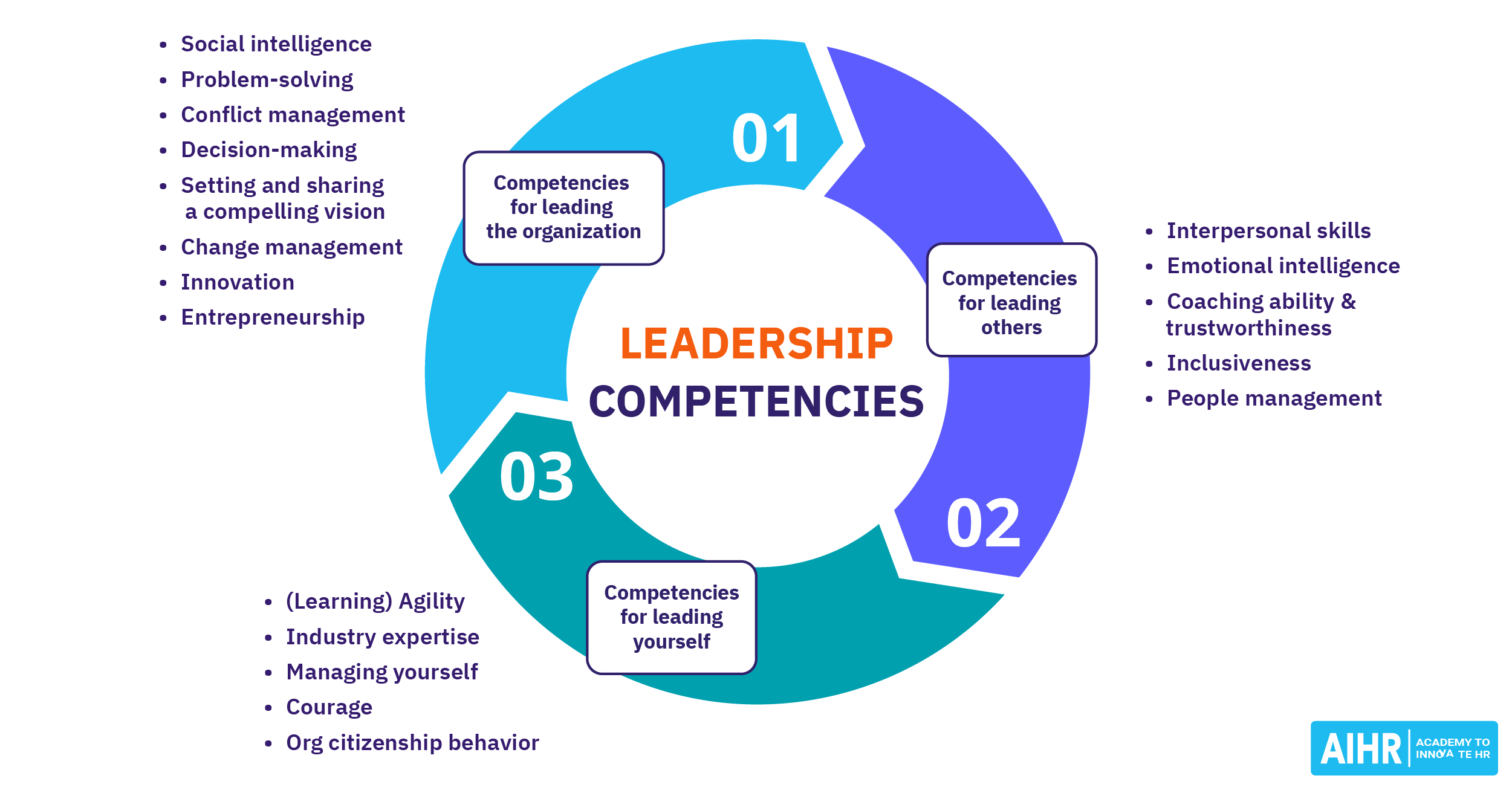Facilitative Leadership
What is facilitative leadership?
Facilitative leadership is a style of leadership that encourages collaboration, active participation, shared responsibility, and dialogue among team members. It is a process-oriented approach to leadership in which the leader acts as a facilitator to help the team members reach their goals.
During facilitative leadership training, leaders will learn how to create an environment that encourages productive conversations, open dialogue, and the importance of listening to others and helping resolve conflicts.
Managers and leaders will also learn to use facilitation techniques like brainstorming and consensus-building to encourage collaboration. Facilitative leadership can be used in any team-based setting to help everyone work together more effectively.
Characteristics of the facilitative leadership style
The facilitative leadership style focuses on fostering collaboration and team-building within a group. Unlike more traditional leadership styles, the facilitative leader works primarily in a supporting role rather than taking the lead on tasks. The facilitation process is about empowering the team to come to their own conclusions and take ownership of the project.
Some of the most critical facilitative leadership qualities include:
- Collaborative communication: Facilitative leaders also understand how to share information with employees clearly, verbally, and in writing. They use their communication skills to moderate discussions and are willing to adapt their communication style to different situations.
- Efficient guidance: Facilitative leaders understand that it is essential to give clear instructions to team members. They can guide how to approach tasks and help ensure everyone is on the same page.
- Collaborative problem-solving: Facilitative leaders are also adept at problem-solving. They understand how to facilitate conversations that lead to solutions rather than just presenting their own ideas. They know how to get team members to brainstorm and collaborate on solutions.

Benefits of facilitative leadership
The facilitative leadership approach has several benefits for businesses and teams. Here are some of the main advantages:
- Increased collaboration: The collaborative nature of facilitative leadership encourages team members to work together more closely. This can lead to better communication, which in turn leads to more effective outcomes.
- Greater employee engagement: By engaging all team members in decision-making, facilitative leaders can help employees feel more invested in their work. This leads to greater job satisfaction and improved morale.
- Improved problem-solving: Facilitative leadership helps teams develop creative solutions to problems by encouraging collaboration and brainstorming. This can lead to more effective solutions that save the organization time and money.
- Boosted productivity: Facilitative leaders can help teams be more productive by fostering a collaborative environment. This can lead to better results, as employees are more motivated to work together towards a common goal.
- Enabled self-leadership: Facilitative leadership can help employees become self-reliant and take ownership of their work. This leads to greater autonomy and higher levels of job satisfaction.
Limitations of facilitative leadership
Facilitative leadership has several benefits but also comes with some disadvantages:
- Risk of compromise over quality: In efforts to achieve consensus, there’s a risk that the final decision may be a compromise that satisfies the group dynamic but isn’t necessarily the best solution.
- Overreliance on group input: Facilitative leaders might rely too heavily on group input for every decision, which can be impractical. Not every decision benefits from widespread consultation, especially those that are routine or require specialized expertise.
- Difficulties in conflict resolution: While this style encourages open discussion and group input, it might not always effectively resolve conflicts if not all group members are committed to collaborative outcomes.
- Ineffectiveness in large groups: Facilitating consensus in large groups or complex organizational structures can be challenging and inefficient, as coordinating and integrating a wide range of opinions and perspectives becomes logistically difficult.
HR tip
Develop leadership competency models that include facilitative leadership as a core competency. Use these models for hiring, performance evaluations, and leadership development planning.
Facilitative leadership examples: Real-life use cases
Below are a few real-life use cases of reputable leaders who have employed facilitative leadership with great success:
Mark Zuckerberg, Facebook CEO
Mark Zuckerberg has been praised for his ability to foster a culture of collaboration and innovation at Facebook. He actively encourages team members to develop new ideas and solve problems creatively. He is one of the world’s youngest and most successful facilitative leaders.
Steve Jobs, Apple CEO
Steve Jobs was known for his ability to get the best out of people. He believed in the power of collaboration and often encouraged team members to work together. He also urged employees to take risks and think outside the box regarding problem-solving. His leadership style has been praised for helping Apple become one of the most successful companies in the world.
FAQ
A facilitative leader might guide a team at a tech company to improve software usability by organizing workshops where all members contribute ideas. Instead of dictating solutions, the leader supports collaboration and consensus, ensuring that the team collectively decides on the best approach, thus fostering innovation and team cohesion.
Facilitative leadership is crucial as it promotes a collaborative environment, harnesses diverse perspectives for innovative solutions, and empowers team members. This approach enhances job satisfaction, skill development, and builds cohesive teams that can effectively tackle complex challenges together.
A facilitative approach involves guiding and supporting a group to achieve its goals by encouraging collaboration, participation, and consensus among all members. This method focuses on empowering individuals by involving them in the decision-making process, ensuring their voices are heard, and helping them work together effectively.







